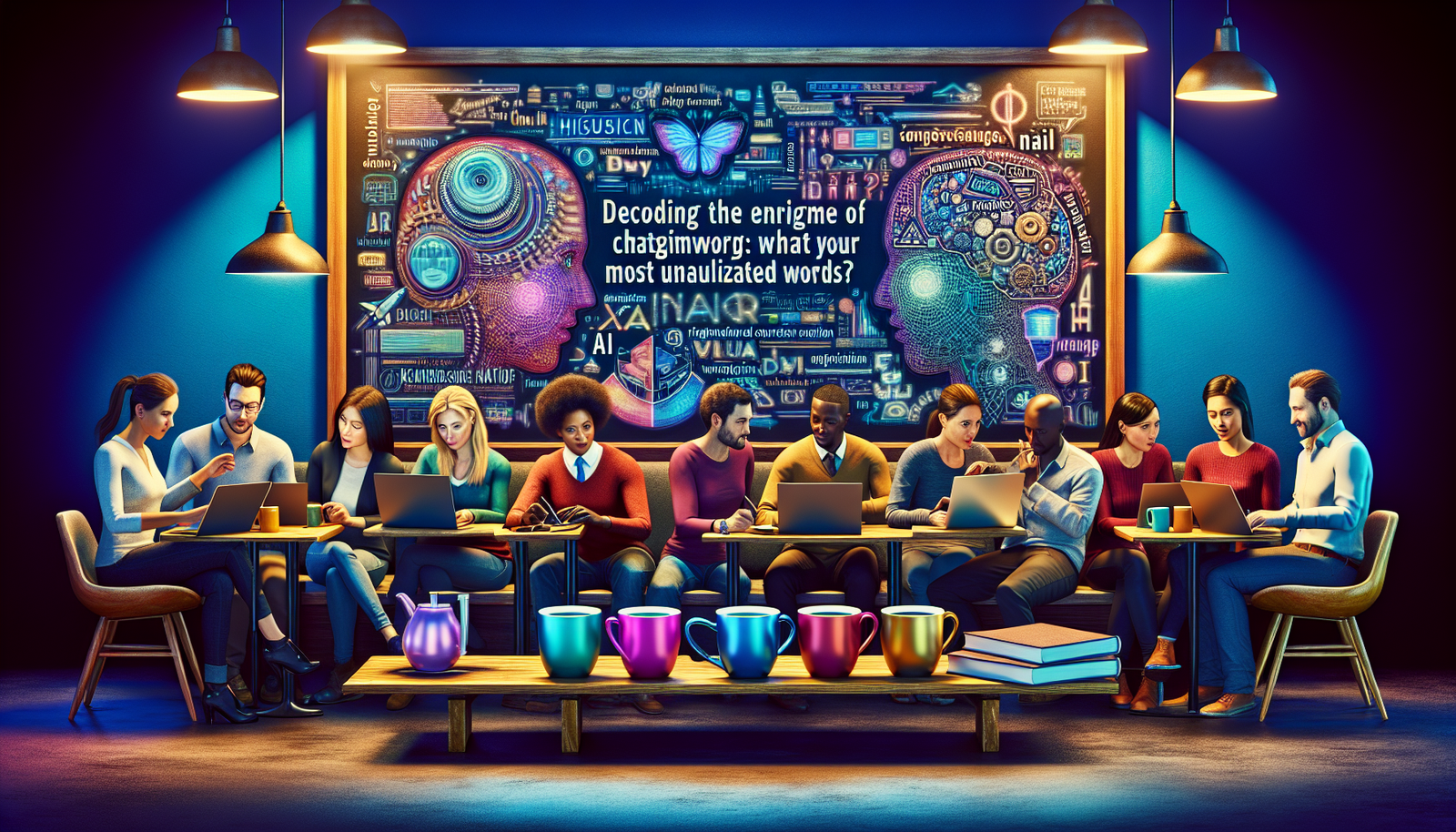The analysis of the terms used by ChatGPT reveals fascinating linguistic structures. The chosen words reflect a distinctive style, shaped by a complex human interaction. _Understanding these lexical choices_ enriches the perspective on the dynamics of communication with contemporary artificial intelligences. The lexical trends offered by this chatbot highlight unexpected preferences. _Uncovering these linguistic nuances_ paves the way for a finer understanding of the relationship between man and machine. The implications of these words resonate beyond simple information exchange, impacting the understanding and use of artificial intelligence.
ChatGPT, a language model developed by OpenAI, reflects distinct lexical particularities. The terms and expressions that this conversational agent regularly uses provide insight into its functioning.
The most used words by ChatGPT
A recent survey revealed that ChatGPT frequently employs words like “of,” “and,” “a/an,” and “in.” These words, while common, testify to the overall structure of its responses.
The chatbot displays an inclination for connectors, particularly “therefore,” “however,” and “from now on,” which provide coherence but can weigh down the discourse.
The analysis conducted by Jordan Gibbs also revealed that more specific terms, such as “reimagined,” emerge in conversations. This term ranks as the most used, recorded 1,033 times more than in human writings.
- Reimagined : the most overused term.
- Bioluminescent : 650 times more used.
- Verdant : 600 times more employed.
- Graphene : 400 times higher in use.
- Dig/excavate : 370 times above the human norm.
Commonly used phrases
ChatGPT also shows a propensity for specific turns of phrase. Certain phrases frequently recur, such as “Dive into the details…” and “It is crucial to understand…”. These formulas reveal habits in the way AI processes information.
- Dive into the details…
- It is crucial to understand…
- As we have seen…
Origin of lexical choices
The language structure of models like ChatGPT relies on massive databases. These systems are designed to predict the next word in a sentence through statistical analyses.
Humans play a fundamental role through a refinement phase known as Reinforcement Learning from Human Feedback (RLHF). This process involves evaluating the responses generated by human testers. Thus, the tool refines itself and offers speech close to oral communication.
Numerous hours of work are required to make this exchange natural, and the outsourcing of this task to lesser economic regions has intensified.
Examples of linguistic use in the English-speaking world
Certain words like “delve” illustrate this trend. They are widely used in countries like Nigeria while being less common in the United States. This distinction highlights ChatGPT’s adaptability to sociolinguistic contexts.
Frequently asked questions about the analysis of the most commonly used terms by ChatGPT
Why are some words used more than others by ChatGPT?
The words are chosen based on a vast textual database that guides the model to favor terms frequently used in human interactions and information sources. This includes connectors and sophisticated vocabulary.
What are the most common words that ChatGPT uses in its responses?
ChatGPT frequently uses words like “the,” “of,” “and,” “to,” “in,” as well as connectors like “however” and “furthermore.”
How does the repeated use of certain terms affect the quality of ChatGPT’s responses?
A high usage of certain words can lead to more structured responses but may also weigh down the discourse and sometimes render the replies less natural.
Does ChatGPT use specific vocabulary in its responses?
Yes, the language model tends to integrate sophisticated vocabulary, including complex terms, which can be attributed to its training with datasets including scientific texts.
What are the most overused words by ChatGPT and their frequency?
Among the most overused words are “reimagined,” frequently used 1,033 times more than by a human, followed by terms like “bioluminescent” and “verdant.”
What is the importance of Reinforcement Learning from Human Feedback (RLHF) in ChatGPT’s language analysis?
RLHF is crucial as it allows the model to be refined using human feedback to improve the relevance and quality of its responses, thereby influencing the choice of words used.
How can analyzing the terms used inform ChatGPT users?
It allows users to understand the potential linguistic biases of the model and adjust their interaction approach to obtain more relevant and fluid results.
What are the most commonly used phrases by ChatGPT in its interactions?
The commonly used phrases include “It is important to note,” “As we have seen,” and “In a rapidly changing world,” which often structure its responses.
How does ChatGPT’s use of words reflect linguistic cultures?
ChatGPT can incorporate words and turns of phrase specific to certain linguistic cultures, influencing how it expresses itself based on collected training data, which may include African linguistic influences.






